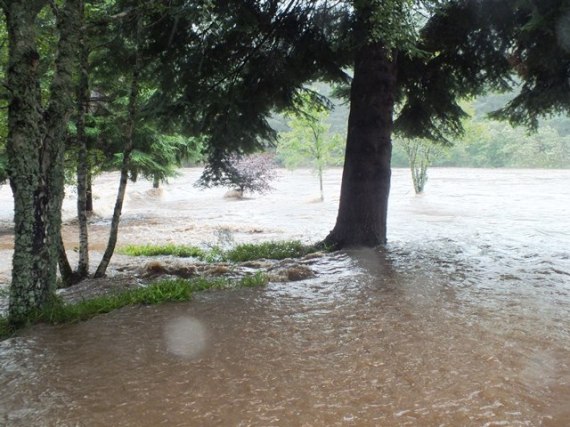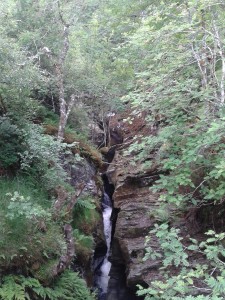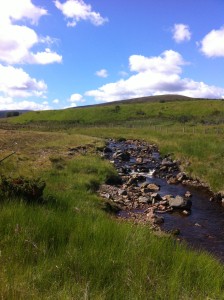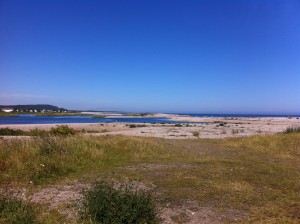Readers of the blog and followers of the Spey will be aware that the Tommore Burn has been stocked with 0+ salmon for a number of years and since 2013 all stocked fish have been fin-clipped. We surveyed two of the regular monitoring sites in July one very still and midge infested evening along with some of the Spey ghilies. The remaining two sites we left until the last day of the 2015 electrofishing programme, mainly so that we would be able to assess how well the 2015 stocked fish had done.
The four electrofishing sites cover the lower, middle and upper reaches of the burn, straddling a range of habitat zones from mixed broadleaf to moorland fringe in the upper site.
The results from the 2015 monitoring with 2014 for comparision, are shown below.
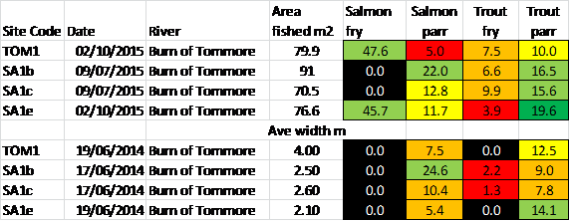
Tommore burn electrofishing results 2015 and 2014. There were no salmon fry in 2014 as all the monitoring was done prior to that years stocking. It can been seen that good densities of salmon fry had been established in both sites in 2015. Overall the mean salmon parr densities were similar in both years, 12.0/100m2 in 2014 compared to 12.9/10m2 in 2015. We have no late season surveys from 2014 with which to compare the 2015 results. Trout fry and parr densities were also higher in 2015 than in 2014.
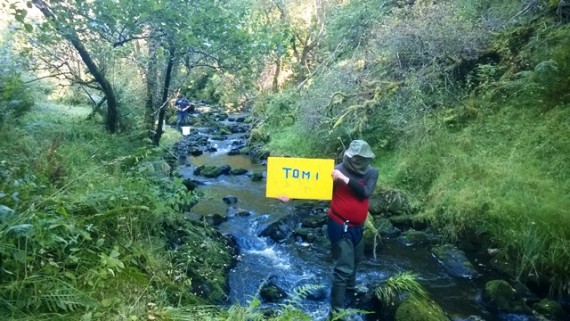
The lower Tommore Burn stocking monitoring site.
Although we are only dealing with two sites and small numbers of fish it was interesting to note that the mean size of the stocked fry in the lower site was 55.4mm whereas it was 58.5mm in the upper site.

Two fin-clipped salmon fry from the upper site. These fry were sampled one month after stocking. Whilst they are lean the tail fins looked perfect.
We are building up a good set of data from the Tommore Burn now; electrofishing and smolt trapping, both of which we will continue in future years.
The post Tommore Burn project: stocking monitoring appeared first on Spey Fishery Board.
Spey Fishery Board

